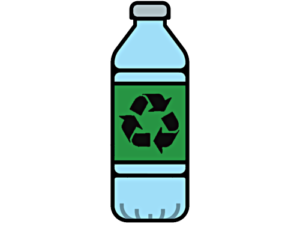Varanasi, India is one of the most beautiful cities in Southeast Asia, with its temples and shrines. It is famous for being on the banks of the Ganges River, a sacred river in India. Recently, the Ganges river has become prone to plastic pollution. Plastic bags, bottles and boxes are dumped on the banks of the river, with many ending up in the river and flowing into the ocean.
Areas like these are present throughout the world, where plastic waste is dumped along banks of rivers or the coastline, eventually being pulled into the ocean. These plastics can end up in the bodies of marine animals, or even trap marine animals.
River banks or coastlines like these are what are called plastic pollution prone areas. Just a week ago, a team from the Tokyo University of Science developed a method to map and combat plastic emissions. The map they are developing is made of sections 1 square kilometer in size. It will contain the amount of plastic emissions per square kilometer, making it possible to see which area has the most plastic.
Unlike previous studies, this map will allow the team to find out exactly where the plastic originates from. Most studies that previously occurred focused on the plastic in the river, whereas this new study is focusing on the plastic on and near the riverbank. This data can then be interpreted to find out whether it is cities, villages, factories, or any other area that is emitting the greatest amount of plastic waste.
There are really 2 main ways to deal with plastic pollution in waterways and oceans. Organizations such as The Ocean Cleanup, and more recently, Clear Blue Sea, are all focusing on the plastic that is already in the ocean. These organizations are finding efficient ways to clean plastic out of the ocean.
The second method, debatably more efficient, is what scientists such as the ones at Tokyo’s University are doing. These scientists are finding plastic at the source, figuring out where it is coming from. With further analysis, such as finding out what factories operate in the heavily polluted areas, the researchers will be able to determine what is causing the large amount of plastic to end up in that area.
This information can then be given to governments or environmental organizations to raise awareness for the plastic polluting these river banks. It can even be used to impose laws on certain companies or cities, limiting the amount of plastic they can use and dump.
We’ve read above what the data from this research can do, from mapping plastics, to banning plastics completely. But many times, there are people who rely on this water to drink, bathe, and water their crops. How can this pollution affect them?
Microplastics can seep into rivers very easily. Let’s say a single plastic bottle has been thrown away on a riverbank. This plastic bottle will take hundreds of thousands of years to degrade, however the combination of a moist river bank and occasional rain can cause this process to shrink down to just a few weeks. Of course, the plastic bottle will not completely degrade, however it will start to break down, and smaller pieces of plastic known as microplastics will end up seeping into to the waterway.
These microplastics are toxic for both humans and marine life. Blue Mussels lose a portion of their ability to absorb nutrients while microplastics remain in their system. Many times, microplastics remain in the fish’s digestive system for up to 7 days. In other species, the ingestion of microplastics do cause changes in the liver and immune system, however it is currently unknown exactly how this impacts the fish.
Humans that live on coastlines and river banks can have adverse reactions to this plastic as well. Although currently debated, researchers say that the ingestion of plastics can cause toxic chemicals to leak into our blood. These chemicals can then travel around our bodies and cause issues such as birth defects, impaired immunity, cancer, and hormonal disorders. Filters to remove these plastics from waterways are being developed around the world, however many times they are either unavailable due to such high demand, or too expensive for people living near a river to afford.
Tokyo University’s researchers are taking a first step in a larger movement: stopping plastic emissions at their source. Plastic pollution throughout the world’s waterways will soon be mapped, possibly in the next 5-10 years. This information can help spark cleanup events, regulations against plastics, and even nationwide bans on plastic usage. With the help of ocean cleanup organizations, plastic pollution will soon be eradicated. Lastly, remember that we can all make a difference; think twice before throwing that plastic bottle on the beach.
